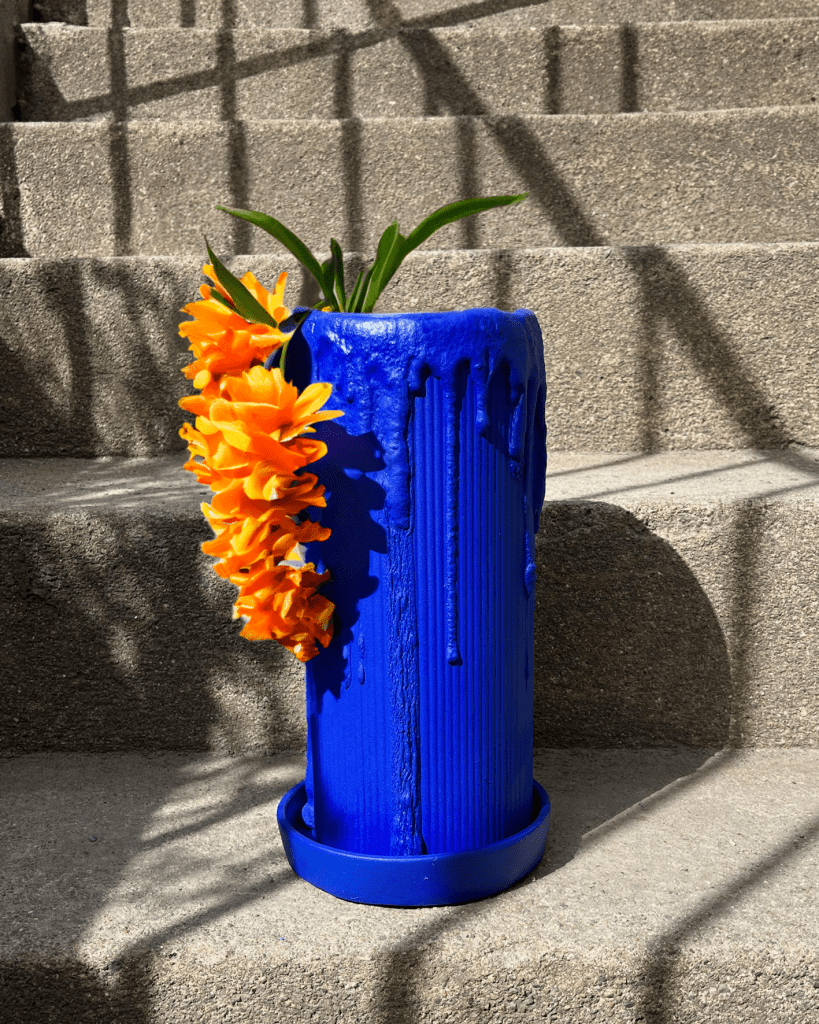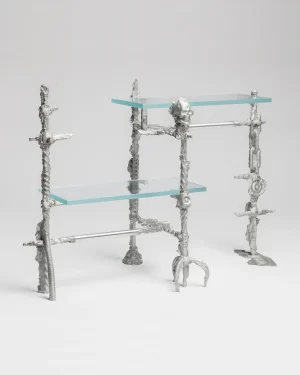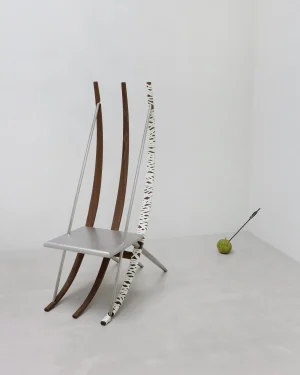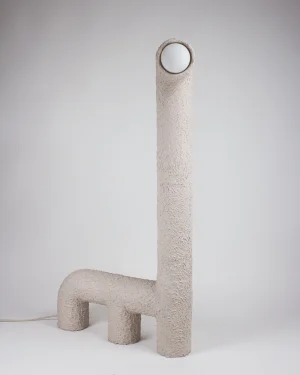
Radical Design: Where Is It Now?
In the realm of radical design, the emphasis lies in pushing the boundaries of conventional norms and venturing into uncharted territories of experimental and unconventional shapes. This audacious approach challenges the very notions of functionality and aesthetics, daring to question and reshape the traditional paradigms of design. Boldness is manifested through an exploration of vibrant and striking colors that evoke strong emotions, reflecting the rebellious spirit of the movement. As pioneers of change, radical designers embrace a profound sense of responsibility towards the environment, opting for innovative and sustainable materials that promote ecological consciousness.
What is Radical Design?
Radical Design is an innovative and rebellious design style that emerged in the late 1960s. It challenges the established norms of traditional design, breaking free from conventions to create thought-provoking and boundary-pushing pieces. This movement seeks to incite change and spark conversations about societal and cultural issues through visionary and unconventional design.


What Are The Origins of Radical Design?
The origins of radical design can be traced back to the late 1960s, a period characterized by intense socio-political upheaval and a fervent desire among designers to shape the world according to their vision of societal change. Inspired by the countercultural movements of the time, notably the Hippie and Anti-establishment movements, radical design emerged as a powerful creative force to challenge the prevailing norms. It found fertile ground in design hubs like Italy and the Netherlands, where designers were driven by a profound urge to break away from the shackles of capitalist consumer culture and advocate for sustainability and social equality.




See More Like This: Visit Our Online Gallery of Radical Designs
What are the Key Characteristics of Radical Design?
Radical design challenges the established norms of traditional design. Some key features of this movement include:
- Sustainable Materials: Commitment to eco-friendly choices, promoting environmental consciousness.
- Radical Vision: Aspires to reshape and revolutionize the design landscape, breaking free from conventions.
- Anti-Mass Production: Protests against mass-produced and superficial design solutions.
- Bold Colors: Vibrant hues evoke strong emotions and reflect the movement’s rebellious spirit.


Current Views in Contemporary Art and Design
Since its inception in the late 1960s, radical design has undergone a fascinating evolution, mirroring the shifting paradigms of society and culture. Initially a rebellion against traditional design norms, it has grown to encompass a broader spectrum of influences and intentions. While still rooted in pushing boundaries and challenging conventions, radical design has embraced sustainability as a fundamental pillar, advocating for eco-conscious practices and materials.
The digital age has ushered in a new era of possibilities, enabling seamless integration of technology into design concepts. Moreover, radical design has evolved to become a powerful tool for social activism, addressing pressing issues and igniting crucial conversations. Its canvas has expanded to encompass diverse perspectives, weaving multidisciplinary approaches and personal narratives into its fabric. This evolution reflects an ongoing dialogue with global culture, where participation and reinterpretation of tradition infuse fresh vigor into the radical design movement.
Read Now: 11 Radical Lighting Concepts that Challenge the Status Quo
The Impact of Radical Design on the Art World
Radical design has had a profound impact on the art world, challenging conventional boundaries and reshaping creative paradigms. By defying traditional norms, radical design has expanded the horizons of artistic expression, influencing artists to explore innovative forms and push the limits of their creativity. It has fostered a deeper connection between art and society, using purpose-driven design to address pressing social and environmental issues, making art more relevant and impactful.
Radical design’s emphasis on sustainability has inspired eco-conscious practices in art-making, encouraging artists to adopt eco-friendly materials and methods. Furthermore, its integration of technology has transformed the art experience, inviting viewers to engage interactively and intimately with the artwork. Ultimately, radical design has energized the art world, driving a movement towards meaningful, socially conscious, and forward-thinking art that challenges perceptions and sparks conversations for positive change.


Read Now: 9 Radical Decorations for Bold Interiors
Conclusion
Radical design still stands as a dynamic and influential movement that has left an enduring impact on the creative world. By embracing unconventional shapes, bold colors, and purpose-driven intent, radical design has challenged traditional norms and reshaped the boundaries of artistic expression. Its integration of sustainability and social consciousness has elevated the role of art as a catalyst for positive change, addressing pressing issues and fostering a more responsible approach to artistic creation. Through the fusion of technology and art, radical design has redefined the art experience, engaging audiences in interactive and immersive ways.




Read Now: 14 Radical Tables Infused with Innovation and Daring Creativity
Discover Radical Design on Adorno
-

 Ballet – Aluminum & Glass ShelfBy Vilius Dringelis€5.875€5.875
Ballet – Aluminum & Glass ShelfBy Vilius Dringelis€5.875€5.875 -

 Bow ChairBy Undress House€18.500€18.500
Bow ChairBy Undress House€18.500€18.500 -

 Dino Big – Floor LampBy Studio Bovti€3.676 incl. tax€3.676 incl. tax
Dino Big – Floor LampBy Studio Bovti€3.676 incl. tax€3.676 incl. tax -

 Fisherman BenchBy Panorammma Atelier€12.500 incl. tax€12.500 incl. tax
Fisherman BenchBy Panorammma Atelier€12.500 incl. tax€12.500 incl. tax -

 Fisherman ChairBy Panorammma Atelier€10.000 incl. tax€10.000 incl. tax
Fisherman ChairBy Panorammma Atelier€10.000 incl. tax€10.000 incl. tax -

 Invisible Panton ChairBy lee hyokk€3.563€3.563
Invisible Panton ChairBy lee hyokk€3.563€3.563 -

 Monkey Big – Floor LampBy Studio Bovti€3.676 incl. tax€3.676 incl. tax
Monkey Big – Floor LampBy Studio Bovti€3.676 incl. tax€3.676 incl. tax -

 Worm – Floor LampBy Studio Bovti€3.676 incl. tax€3.676 incl. tax
Worm – Floor LampBy Studio Bovti€3.676 incl. tax€3.676 incl. tax -

 Noodle Stool – ABS PlasticBy Gast Studio€680€680
Noodle Stool – ABS PlasticBy Gast Studio€680€680 -
Piece on sale

 Dysplasio – Handblown Wall LightBy Anna JožováPrice range: €2.275 through €2.888 incl. taxPrice range: €2.275 through €2.888 incl. tax
Dysplasio – Handblown Wall LightBy Anna JožováPrice range: €2.275 through €2.888 incl. taxPrice range: €2.275 through €2.888 incl. tax -

 The Awkward CabinetBy Masha Volkova€4.875 incl. tax€4.875 incl. tax
The Awkward CabinetBy Masha Volkova€4.875 incl. tax€4.875 incl. tax -

 Dysplasio – Dark Purple Blown Glass VaseBy Anna Jožová€2.375 incl. tax€2.375 incl. tax
Dysplasio – Dark Purple Blown Glass VaseBy Anna Jožová€2.375 incl. tax€2.375 incl. tax -

 Fur Low TableBy Undress House€9.375 incl. tax€9.375 incl. tax
Fur Low TableBy Undress House€9.375 incl. tax€9.375 incl. tax -

 The Cabinet In LoveBy Masha Volkova€5.750 incl. tax€5.750 incl. tax
The Cabinet In LoveBy Masha Volkova€5.750 incl. tax€5.750 incl. tax -

 Madona – Aluminum & Porcelain Wall LampBy Aviv Mor-Yosef€1.275 incl. tax€1.275 incl. tax
Madona – Aluminum & Porcelain Wall LampBy Aviv Mor-Yosef€1.275 incl. tax€1.275 incl. tax -

 Mess – Wood / Steel Dining TableBy SALAK Studio€11.000 incl. tax€11.000 incl. tax
Mess – Wood / Steel Dining TableBy SALAK Studio€11.000 incl. tax€11.000 incl. tax -

 Akropolis BenchBy Thomas Waidhofer€4.000 incl. tax€4.000 incl. tax
Akropolis BenchBy Thomas Waidhofer€4.000 incl. tax€4.000 incl. tax -

 Wrecking Ball Ceiling LampBy Aviv Mor-Yosef€9.500 incl. tax€9.500 incl. tax
Wrecking Ball Ceiling LampBy Aviv Mor-Yosef€9.500 incl. tax€9.500 incl. tax -

 Le Sentier Des Ocres – Wool Landscape RugBy Viktorija Kuliavaitė€6.250 incl. tax€6.250 incl. tax
Le Sentier Des Ocres – Wool Landscape RugBy Viktorija Kuliavaitė€6.250 incl. tax€6.250 incl. tax -

 Sculpt – Bar CabinetBy hermhaus€4.829€4.829
Sculpt – Bar CabinetBy hermhaus€4.829€4.829 -

 Shocking Chair – Stained Oak Wood Dining ChairBy Josh Page Studio€940€940
Shocking Chair – Stained Oak Wood Dining ChairBy Josh Page Studio€940€940 -

 A Tribe Called Sagrada – Floor LampBy Annie Legault€3.656€3.656
A Tribe Called Sagrada – Floor LampBy Annie Legault€3.656€3.656 -

 Disguise Series 00 – Armrest Bench 5 SeaterBy ESTO€4.000 incl. tax€4.000 incl. tax
Disguise Series 00 – Armrest Bench 5 SeaterBy ESTO€4.000 incl. tax€4.000 incl. tax -

 Disguise Series 00 – Stool 01By ESTO€625 incl. tax€625 incl. tax
Disguise Series 00 – Stool 01By ESTO€625 incl. tax€625 incl. tax













